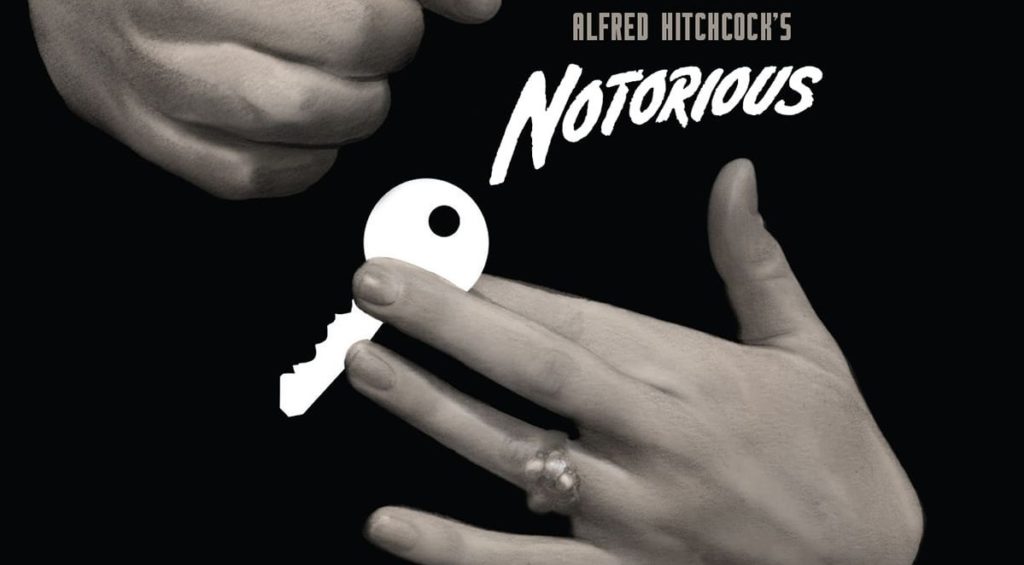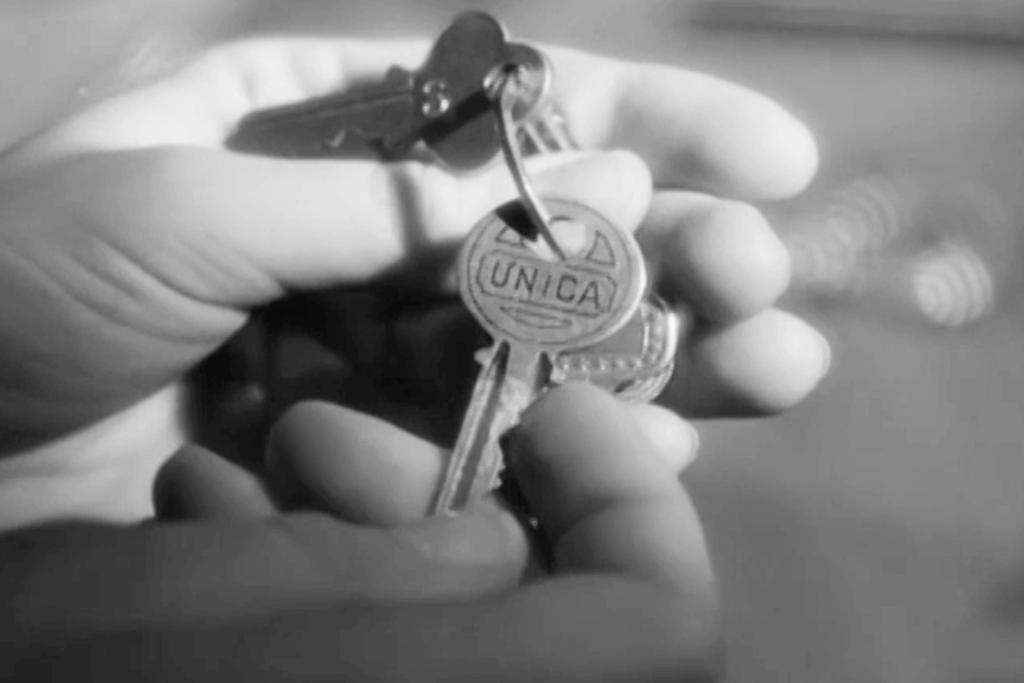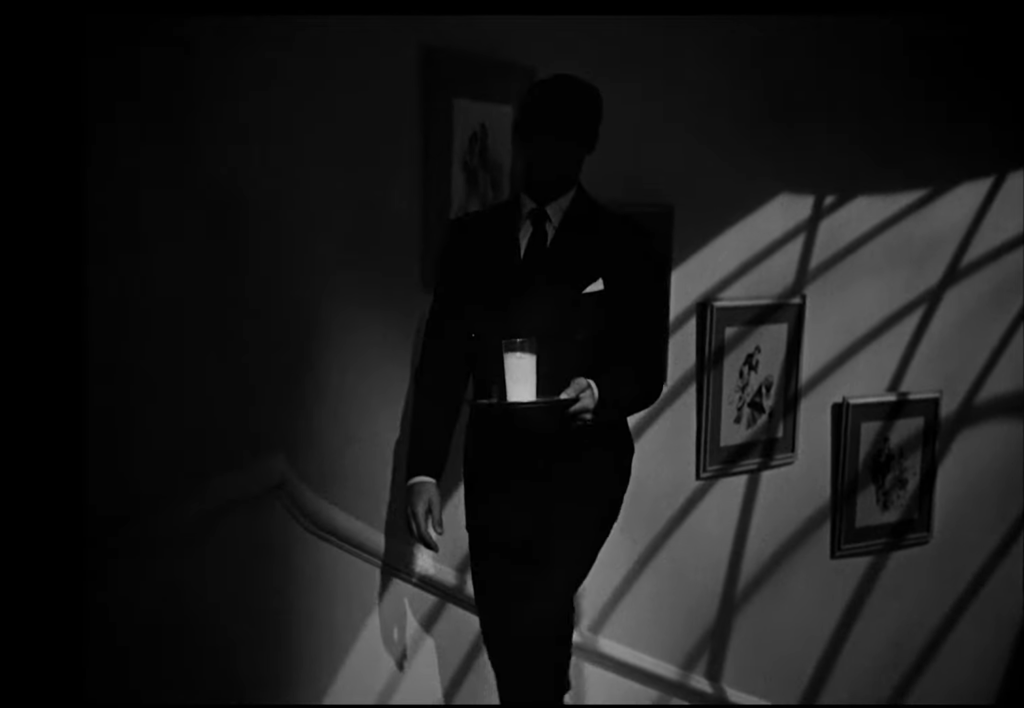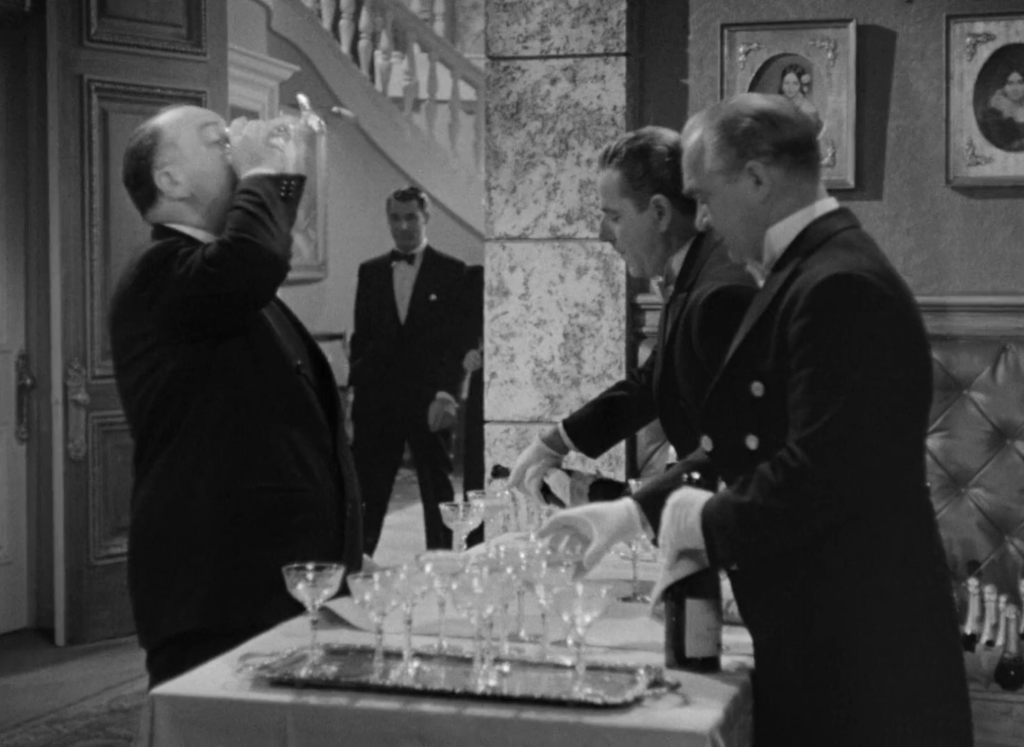| Zach Staads |

Notorious plays at the Trylon Cinema from Sunday, April 14th, through Tuesday, April 16th. Visit trylon.org for tickets and more information.
Before I sat down to watch Notorious, before I knew it was a Hitchcock film, before I’d seen a single frame, still, or trailer, I saw the Criterion cover. It was a very simple picture: Two people embracing, one facing away, and the other, Ingrid Bergman, facing out with her eyes peering down at the outline of a key that she holds carefully between her fingers.
This key on its own is nothing; small, rounded, with a little line patterning on it, and a large, generic-sounding faux-brand name “UNICA” that you’d probably find on a key stuffed in the back of a drawer in an old house with too many doors. However, when it’s put next to several keys that lack any of those precise details, it pops as if it was in Technicolor.

The presentation of this key on the page of the script is quite plain too. It doesn’t even refer to it as being different in any way from the others aside from bearing the letters which were shown minutes ago on the lock of the door that Ingrid Bergman’s Alicia needs to get through.
What’s important here is the distinct lack of detail provided for the key versus what appears on screen. All that extra zazz that makes it stick out had to come from somewhere. It did, and it likely came from the film’s prop master. This is the person who also would’ve designed, or picked out, the wine bottles that are integral throughout, the teacup that becomes the next important prop in the film, and every last champagne glass, newspaper, and pair of horse-racing binoculars that we see throughout.
Prop masters and properties departments are one of the most unsung heroes of film sets, especially in films where the ordinary is what is being presented to us. Without those small details being perfectly set the character of the film is lost. People go absolutely ape for a great prop and will seek out good replicas, or the real thing, with such vigor that you’d think we’d at least know the names of the makers.
Unfortunately, especially when looking back in time pre-1970s when credits were front loaded, they were typically shorter, less specific, and did not disclose prop master details (you can look through my 10-hour search history for the receipts).
Indeed, prop departments go uncredited in every one of Hitchcock’s films, with only a spare few even having a list of uncredited prop roles present. It’s a shame, considering how integral props are—especially to Hitchcock, whose camera often follows props rather than people.
Arguably the most standout example of this is in Suspicion (1941) when Cary Grant’s character, a new husband whose every move is suspect to his wife, Joan Fontaine, brings a glass of milk on a tray up to her room. They could’ve left it at that, but Hitchcock wanted it to feel otherworldly, for the audience to suspect foul play in this tall glass of milk, just as his wife does. So not only is Cary Grant’s face cast in shadows during his ascent to her room, but the prop master put a light bulb within the milk, which gives it the eeriest glow—especially in black and white. The white cuts through everything else like a neon sign screaming, “SOMETHING’S AMISS!”

These details are ever-present in the props of Hitchcock’s work. The biggest one in Notorious is that UNICA is not just some generic faux-brand name, it’s a word. The English translation for UNICA (from Portuguese, the language of Notorious’ Rio de Janeiro setting) is single/only/unique. Do allow me a bit of conjecture as well. In the script the word on the key is misspelled “UNIKA,” and I wouldn’t put it past the prop maker to be the one who checked on the spelling and made sure that it was correct on the film (pure conjecture, but I’ve certainly been saved in stage shows and films by prop masters who notice these little things before anyone else does).
This, the absolute ingenuity and thoughtfulness of prop departments, is why I felt the need to write this article. There’s so much rich detail within even the smallest of props and it would not be there without the thought and care of a dedicated craftsperson whose hours are spent toiling away at the most minute of details to make sure everything turns out the best it can on screen.
So, I dedicate this piece to all those lost prop masters/makers/designers of days past whose names were not deemed important enough to grace the silver screen. Raise a glass, thank your local prop folks, and every last person who spends their lives making all the little details on props shine like stars.

Edited by Olga Tchepikova-Treon
